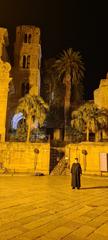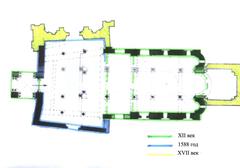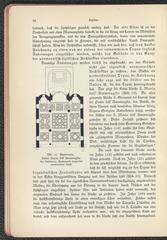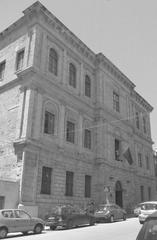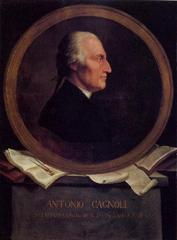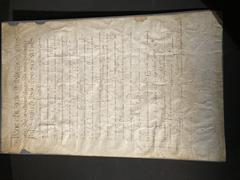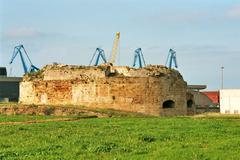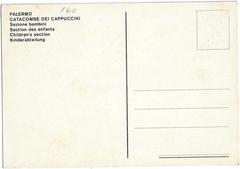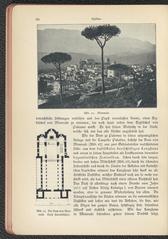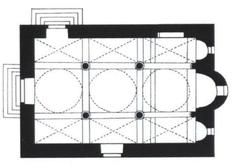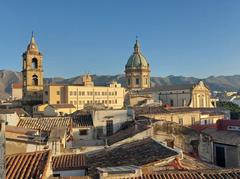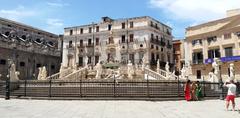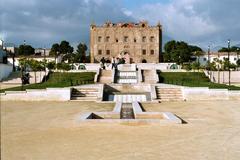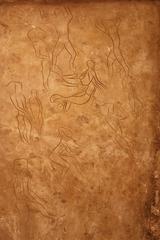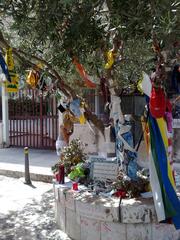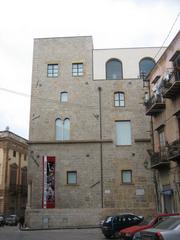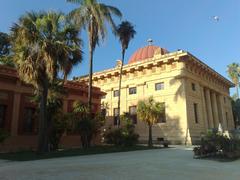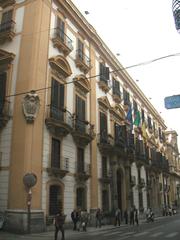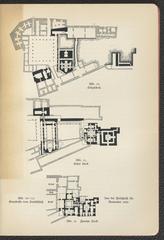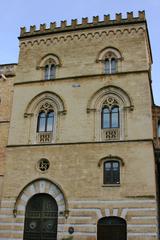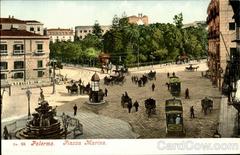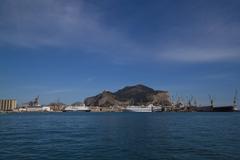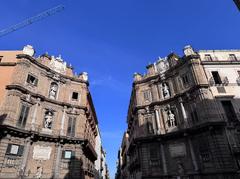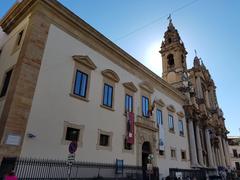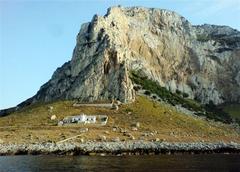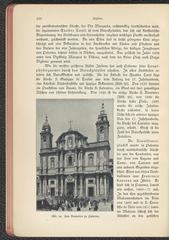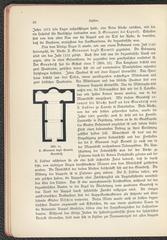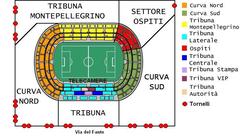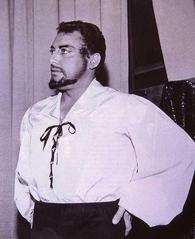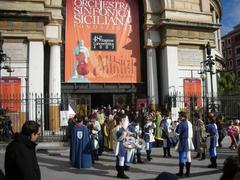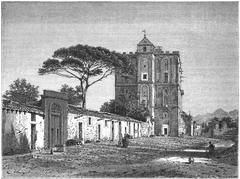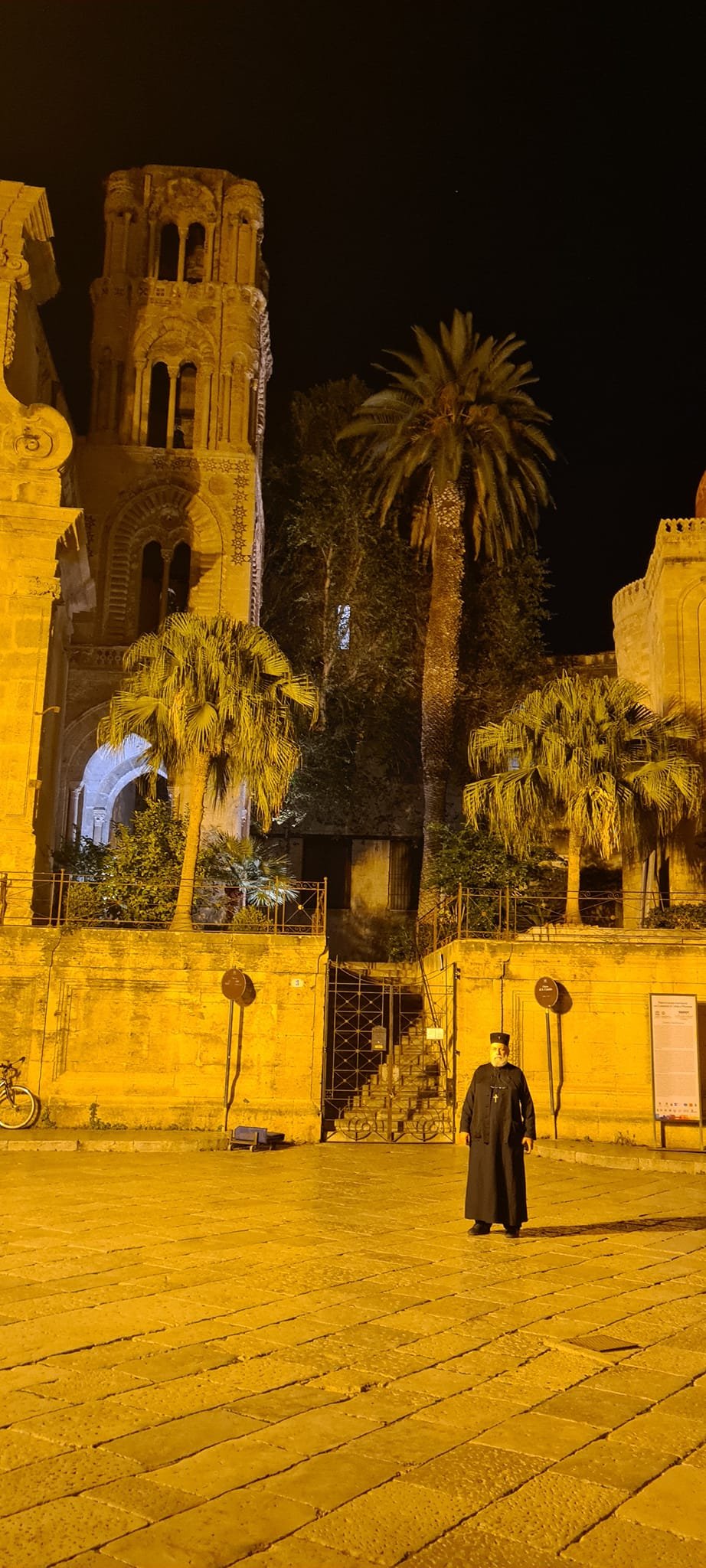
Martorana Palermo Visiting Hours, Tickets, and Historical Guide
Date: 14/06/2025
Introduction to Martorana Santa Maria dell’Ammiraglio, Palermo
La Martorana, officially known as the Church of Santa Maria dell’Ammiraglio, stands as a shining emblem of Palermo’s multicultural heritage. Founded in 1143 by George of Antioch, the Grand Admiral under King Roger II, this church is celebrated for its breathtaking Byzantine mosaics and its harmonious blend of Norman, Byzantine, and Islamic architectural influences. Situated in the heart of Palermo’s historic center, La Martorana encapsulates Sicily’s medieval spirit—where diverse cultures, faiths, and artistic traditions flourished together.
For visitors, La Martorana is not only a site of spiritual significance for the Greek-Byzantine and Italo-Albanian communities but also a living testament to Sicily’s role as a crossroads of the Mediterranean. Its mosaics, including the celebrated coronation of Roger II by Christ, rank among the oldest and most significant in Sicily, crafted by artisans from Constantinople. The church’s Arab-Norman-Byzantine architecture further reflects the remarkable coexistence and cultural exchange of Norman Sicily.
This guide provides all the essential information for planning your visit to La Martorana—covering practical details like opening hours, tickets, accessibility, and tours, as well as insights into its historical and artistic importance and nearby attractions. Whether you are an art lover, history enthusiast, pilgrim, or traveler, this resource will help you make the most of your experience at one of Palermo’s most treasured landmarks.
For official visitor information and in-depth historical context, see resources such as Italia.it, PalermoViva, and Wonders of Sicily.
Quick Contents Overview
- Introduction
- Practical Information for Visitors
- Opening Hours
- Tickets & Admission
- Accessibility
- Guided Tours
- Travel Tips & Nearby Sights
- Historical and Artistic Overview
- Foundation & Multicultural Legacy
- Architecture & Mosaics
- Evolution and Modifications
- Religious and Social Role
- Key Historical Milestones
- Frequently Asked Questions
- Visitor Experience and Tips
- Location & Access
- Food & Local Culture
- Summary & Recommendations
- Sources
Practical Visitor Information
Opening Hours
La Martorana’s opening times can vary slightly depending on the season and religious events. The most up-to-date general schedule is:
- Monday to Saturday: 09:45 – 13:00 and 15:30 – 17:30
- Sunday: 09:00 – 10:30
- Public Holidays: 10:30 – 12:30
Always check for special closures or changes due to religious services or restoration on the official Palermo tourism website.
Tickets and Admission
- Standard adult ticket: €2.00
- Reduced ticket: €1.00 (students, seniors, groups—eligibility may vary)
- Combined tickets: Occasionally available with neighboring sites such as the Church of San Cataldo
Tickets are sold at the church entrance. Guided tours (with a separate fee) are highly recommended for those interested in the art and history of the site (Sicily.co.uk; Cultured Voyages).
Accessibility
- Wheelchair Access: Ramps at the main entrance make the church accessible, but some interior areas have uneven floors. Assistance is available—please inquire ahead.
- Facilities: No public restrooms inside; nearest are in local cafés around Piazza Bellini.
Guided Tours and Audio Guides
- On-site tours: Available in Italian and English (subject to availability).
- Audio guides: Sometimes offered for a small fee; ask at the ticket office.
- Group bookings: Recommended in advance, especially during peak seasons.
Photography and Visitor Etiquette
- Photography: Allowed for personal use, but no flash or tripods.
- Dress code: Modest attire required (shoulders and knees covered).
- Silence: Please respect the peaceful atmosphere, especially during services.
Best Times to Visit
- Season: March–June and September–November are ideal for mild weather and fewer crowds.
- Time of day: Early morning or late afternoon offers better light for viewing mosaics and a quieter atmosphere.
- Summer: High temperatures and crowds in July and August can make visits less comfortable (Cultured Voyages).
Duration of Visit
Expect to spend 30–60 minutes, or longer if joining a guided tour or combining with other nearby sites.
Historical and Artistic Overview
Foundation and Multicultural Legacy
La Martorana was founded in 1143 by George of Antioch, admiral to King Roger II, during a period when Sicily thrived as a crossroads of Mediterranean civilizations. Initially intended for the Greek-Byzantine clergy, it reflects the openness and diversity of Norman Sicily (Italia.it; PalermoViva; thegeographicalcure.com).
Its location in Piazza Bellini placed it at the civic and religious heart of Palermo, reinforcing the prominence of its patrons and the cosmopolitan character of its administration.
Architecture and Mosaics
La Martorana stands as an outstanding example of Arab-Norman-Byzantine synthesis:
- Plan: Follows the Greek cross plan, rare in Western Europe, with a central dome symbolizing the heavens (Wonders of Sicily).
- Mosaics: The church’s mosaics, dating from the mid-12th century, are among the oldest and finest in Sicily. They depict Christ Pantocrator, Madonna, Apostles, and scenes such as Roger II’s coronation by Christ (Sacred Destinations).
- Materials: Byzantine techniques using glass and gold-leaf tesserae create luminous, intricate imagery.
- Islamic Influence: Seen in geometric and arabesque motifs, as well as the use of muqarnas vaulting.
Evolution and Modifications
- 1193: A Benedictine convent was added by Goffredo and Eloisa Martorana, after whom the church is popularly named.
- 1435: The church was transferred to the Martorana convent by King Alfonso V of Aragon.
- 17th–18th centuries: Baroque chapels and stucco were added, though the original mosaics and structure remain central (Italia.it).
Religious and Social Role
Initially a Greek Orthodox church, La Martorana has always served as a focal point for Palermo’s Eastern Christian communities. Today, it belongs to the Italo-Albanian (Arbëreshë) Catholic diocese and regularly hosts Byzantine rite liturgies in Albanian and ancient Greek (italian-traditions.com). The church remains a model of religious tolerance and cultural coexistence.
UNESCO Recognition
La Martorana is part of the UNESCO World Heritage listing “Arab-Norman Palermo and the Cathedral Churches of Cefalù and Monreale,” recognized for its unique synthesis of architectural and artistic traditions (UNESCO).
Key Historical Milestones
- 1143: Foundation by George of Antioch under Roger II (Italia.it)
- 1193: Benedictine convent established by Goffredo and Eloisa Martorana (PalermoViva)
- 1435: Church transferred to the Martorana convent
- 17th–18th centuries: Baroque modifications and additions
- 2015: UNESCO World Heritage inclusion
Visitor Experience and Tips
Nearby Attractions
La Martorana is surrounded by some of Palermo’s top historical sites:
- Church of San Cataldo: Next door, known for its red domes and Norman architecture (Capture the Atlas).
- Church of Santa Caterina d’Alessandria: Across Piazza Bellini, with a rooftop terrace and ornate interiors.
- Fontana Pretoria: A grand Renaissance fountain.
- Quattro Canti: Palermo’s iconic Baroque crossroads.
Food and Local Culture
- Frutta di Martorana: Traditional marzipan fruit, originally created by the Martorana nuns (Corvinus).
- Local specialties: Enjoy arancini and sfincione at nearby eateries.
Safety, Accessibility, and Services
- Pickpocketing: Keep belongings secure, especially in busy areas.
- COVID-19: Check for current health protocols.
- Languages: Most staff speak Italian; English is commonly spoken by guides.
- No shop inside: Souvenirs and guidebooks are available at nearby shops.
Frequently Asked Questions (FAQs)
Q: What are Martorana’s opening hours?
A: Monday–Saturday 09:45–13:00 & 15:30–17:30; Sunday 09:00–10:30; Public holidays 10:30–12:30.
Q: What is the admission fee?
A: €2.00 for adults; €1.00 for eligible reductions.
Q: Are guided tours available?
A: Yes, in Italian and English, often for an additional fee.
Q: Is the church wheelchair accessible?
A: Limited access; ramps at entrance, but some uneven floors inside.
Q: Is photography allowed?
A: Yes, without flash or tripods.
Q: When is the best time to visit?
A: Spring and autumn for mild weather and fewer crowds; early/late in the day for best light.
Location and Access
La Martorana is centrally located at Piazza Bellini, 3, Palermo—within walking distance of the city’s main attractions. City buses and taxis serve the area; parking is limited in the historic center, so use public transport or park outside the ZTL (restricted zone) (Summer in Italy).
Summary and Visitor Recommendations
La Martorana is a jewel of Palermo, offering visitors an extraordinary glimpse into Sicily’s multicultural history. Its 12th-century mosaics and Arab-Norman-Byzantine architecture tell the story of a city shaped by diverse civilizations. As an active place of worship, particularly for the Arbëreshë community, it continues to embody cultural resilience and coexistence.
To make the most of your visit:
- Check current hours and book ahead when possible
- Consider a guided tour or audio guide
- Explore nearby Arab-Norman sites
- Enjoy local specialties in Piazza Bellini
For more details and updates, visit Italia.it, PalermoViva, and Wonders of Sicily.
Sources and Further Reading
- Italia.it: Santa Maria dell’Ammiraglio
- Wonders of Sicily: La Martorana Guide
- The Geographical Cure: Guide to La Martorana
- Summer in Italy: Martorana Visitor Guide
- PalermoViva: Church of Santa Maria dell’Ammiraglio
- Sacred Destinations: Palermo Martorana
- Cultured Voyages: Palermo in 2 Days
- Corvinus: Palermo’s Santa Maria dell’Ammiraglio
- Capture the Atlas: Things to Do in Palermo
- italian-traditions.com: La Martorana, a Treasure in Palermo
- manyfacesofsicily.com: Chiesa della Martorana
- worldtravelconnector.com: One Day in Palermo
- UNESCO: Arab-Norman Palermo
